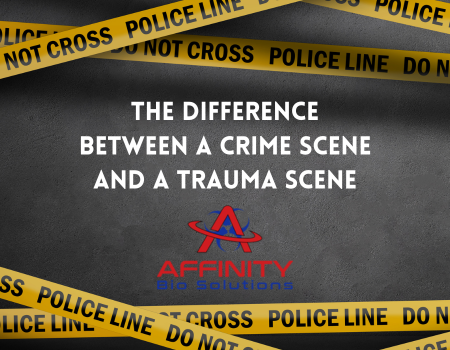Crime scenes and trauma scenes are terms often used interchangeably, but they represent distinct situations with unique characteristics and implications. While both involve elements of tragedy and potential danger, understanding the differences between them is crucial for law enforcement, forensic experts, and mental health professionals. Let us delve into the disparities between crime scenes and trauma scenes, shedding light on the distinct nature of each.
Defining Crime Scenes:
 A crime scene is a location where a criminal act has occurred. It encompasses a broad spectrum of offenses, ranging from theft and vandalism to more serious crimes like assault, murder, or sexual assault. The primary focus at a crime scene is to collect evidence, preserve the scene’s integrity, and establish the facts of the criminal event. Law enforcement personnel, forensic experts, and crime scene investigators work collaboratively to document, collect, and analyze evidence that can aid in identifying and prosecuting the perpetrator.
A crime scene is a location where a criminal act has occurred. It encompasses a broad spectrum of offenses, ranging from theft and vandalism to more serious crimes like assault, murder, or sexual assault. The primary focus at a crime scene is to collect evidence, preserve the scene’s integrity, and establish the facts of the criminal event. Law enforcement personnel, forensic experts, and crime scene investigators work collaboratively to document, collect, and analyze evidence that can aid in identifying and prosecuting the perpetrator.
Characteristics of Crime Scenes:
- Evidence Collection: The primary objective at a crime scene is to collect physical evidence, such as fingerprints, DNA samples, and any other relevant material that may link the perpetrator to the crime.
- Legal Investigation: Crime scenes are subject to legal investigations, and the information gathered may be presented in a court of law. The emphasis is on establishing the guilt or innocence of an individual.
- Law Enforcement Presence: Police and other law enforcement agencies take charge of crime scenes, ensuring the security of the area and conducting a thorough investigation.
Defining Trauma Scenes:
On the other hand, a trauma scene is a location where a traumatic event has taken place, regardless of whether a crime occurred. Trauma scenes are associated with events that cause emotional distress, such as accidents, natural disasters, suicides, or sudden deaths. Unlike crime scenes, the focus at a trauma scene is not on gathering evidence for legal proceedings but on providing support for individuals affected by the traumatic event.
Characteristics of Trauma Scenes:
- Emotional Impact: Trauma scenes often involve significant emotional distress for those who witness or are directly impacted by the event. These scenes require a compassionate response to address the psychological well-being of individuals involved.
- Crisis Intervention: Mental health professionals, first responders, and counselors play a crucial role in trauma scenes, offering immediate support and resources to those affected by the traumatic event.
- No Legal Investigation: While authorities may still be present at a trauma scene to manage the aftermath, the primary goal is not to collect evidence for legal proceedings but to provide assistance and support.
Conclusion:
In conclusion, while both crime scenes and trauma scenes involve distressing events, they serve different purposes and require distinct approaches. Crime scenes demand meticulous evidence collection and legal investigation, focusing on the identification and prosecution of perpetrators. Trauma scenes, on the other hand, prioritize emotional support and crisis intervention for those affected by the event, with less emphasis on legal proceedings. Recognizing the nuances between these two types of scenes is essential for professionals involved in public safety, mental health, and forensic science.

